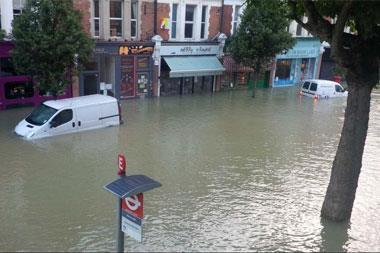As businesses look to protect intangible assets from interruption events such as natural catastrophes, parametric insurance products are emerging as an ideal solution to fill gaps in cover.
Parametric insurance has grown in popularity, as businesses increasingly look to protect intangible assets from interruption events such as natural catastrophes. While property and casualty insurance for such events has been available for some time now, businesses have been turning to parametric insurance solutions as a complement to traditional insurance, drawn by the simplicity, speed and broad cover that such products provide.
Martin Hotz, Head Parametric Nat Cat at Swiss Re Corporate Solutions explains: “Loss does not stop with direct property damage and the resulting business interruption. Traditional policies are very good at addressing these situations, but there is basis risk in traditional PDBI policies, through sublimits, deductibles and exclusions.
“Parametric solutions are ideal to fill these gaps. Large Natural Catastrophe (Nat Cat) events tend to have far reaching and long-lasting ripple effects, to infrastructure, consumer spending, supply chains – the list goes on. Parametric solutions can assist in these situations, and this assistance can be provided very quickly. Studies have shown that when it comes to recovering from a large Nat Cat event, the quick release of funds makes them much more effective.”
More natural catastrophes than ever
One of the key drivers in the popularity of parametric insurance products is the increasing frequency and severity of natural catastrophes themselves. While businesses have always strived to put policies in place to protect against extreme weather events, as they become more prolific – and therefore the risk of interruption grows – the quick and easy payout from a parametric policy is becoming more valuable.
Hotz says: “A warming atmosphere holds more energy, and with that comes the potential of more severe weather-related catastrophes. And the world’s population living in low-lying, river flood, tropical cyclone or storm surge exposed areas has grown very rapidly over the last decades.
“The need for efficient risk transfer is clearly given, and we are here to make people, businesses and societies more resilient. Parametric solutions can be one way of achieving that. Parametric solutions are a helpful risk transfer tool a as they are fast, transparent and flexible.”

The changing nature of business
Another driver in parametric popularity is the changing nature of business, particularly in the sharing economy. Many more organisations now are finding that some of their most valuable assets are not things that can be traditionally insured. For instance, taxi apps these days often do not own the vehicles which their drivers operate. Equally, holiday let firms may not own the properties which they rent out on their sites.
Businesses such as these are not well-suited to traditional property damage business interruption insurance by itself, which relies on physical damage to owned property to trigger .If a natural catastrophe affects assets that are not owned by the company, they are unlikely to be covered. Hotz says that parametric insurance, triggered instead by event occurrence, can address these gaps, allowing businesses to get a payout, without needing to prove physical damage from a storm, hurricane, earthquake or flood.
It can also help more traditional businesses recover from a broader impact to their operations and revenues. Covid-19 led to a surge in people working from home, so the state of their property and people’s ability to work remotely is very business-relevant, but can be impaired by natural catastrophes. So companies have started to purchase parametric solutions to hedge their employee assistance efforts following nat cat events. Hotz further gives the example of loss of attraction suffered by the tourism industry, where an Earthquake may not cause any physical damage to the hotels but lots of the excursions are closed, leading to a dearth of guests. Or one where a Hurricanemeans that the beach is less Instagram-ready putting off potential travellers.
Parametric insurance solutions can achieve things that are not possible with conventional insurance products indemnifying on an actual loss sustained basis. They push the envelope of insurability, eliminating all complexity of a loss investigation process and can give customers the confidence when it comes to liquidity and speed of payout.
Data you can trust
While parametric insurance has existed for over 20 years, it is still seen by many to be relatively new. And with any innovation there are always those that will have concerns. However, Hotz says that advances in data analytics and improvements in modelling techniques have boosted the popularity of parametric products, and has also allowed today for modelling of previously deemed “uninsurable” risks. Better data also means increased risk assessment certainty, allowing businesses to put sound continuity plans in place and make better-informed insurance purchasing decisions.
He says: “There is indeed a new world opening up in terms of hi-quality sensors and instruments that allow to monitor the globe on a 365/24/7 basis, and we are using this new wealth of data to use it for risk transfer purposes.
“With today’s high resolution data, we can structure solutions that are more location specific and therefore a much better proxy for the loss – where loss includes all direct and indirect adverse consequences from an event occurring. As we live in a data driven era, the acceptance of using independent 3rd party data, which typically is available within days of an event, as the basis for risk transfer, has clearly gone up.
“This year we settled payments from Earthquakes, Tropical Cyclones and Hailstorms within a few days of receiving notice. A very quick, smooth, hassle-free process, so our insureds see that these products work.”




















No comments yet